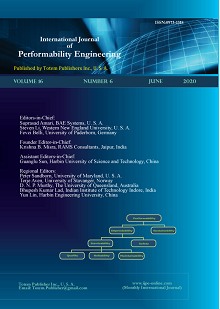-
Design of Machine Learning Model for Urban Planning and Management Improvement
- Jiafeng Zhou, Tian Liu, and Lin Zou
-
2020, 16(6):
958-967.
doi:10.23940/ijpe.20.06.p14.958967
-
 Abstract
Abstract
 PDF (407KB)
PDF (407KB)

-
References |
Related Articles
With the aid of artificial intelligence, this paper builds a machine learning model with the KNN algorithm to optimize the traditional method of urban planning and management (UPM). The optimization is realized through two steps. First, the relevant theories of the updated UPM of livelihood oriented UPM (LOUPM) are explored for the later machine learning architecture design. People's livelihood has a great influence on UPM. Livelihood orientation makes the complex UPM even more complicated due to diverse living needs of citizens. This paper analyzes the deeper relationship between the people's livelihood and UPM, systematically studies the function and connotation of the people's livelihood behavior, and profoundly discusses current contradictions and restraining factors. Second, based on a better understanding of LOUPM, this paper further proposes an artificial intelligence approach to select most related factors to optimize UPM from databases. In the first paper of this series, in the analysis of the relevant UPM theories, three scopes of LOUPM are concluded to be the evaluation of data sets: authority, time, and space. Then, this paper continues to design a software model with the KNN algorithm to evaluate the urban plans and generates optimization advice for the user. Based on this research, it is possible to explore LOUPM. In order to make every effort to seek ways and methods to meet the challenge of the LOUPM in the new period, and by introducing a creative computing approach of government management and social governance, this article can contribute to the growing demand of China's urbanization process.

